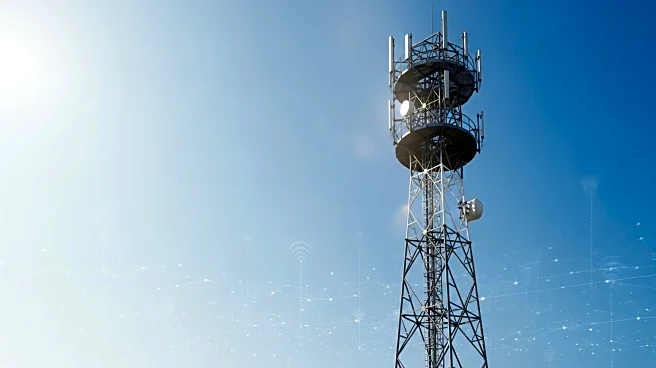What's Happening?
At the SCTE Tech Expo 2025, CableLabs President and CEO Phil McKinney announced the development of a new 'optional annex' to DOCSIS 4.0, which aims to deliver 25 Gbit/s on 3GHz networks. Additionally, CableLabs is working on a specification to extend the HFC spectrum to 6 GHz, potentially achieving speeds of 50 Gbit/s. These advancements promise higher bandwidth throughput at costs lower than fiber, presenting significant opportunities for cable operators. During the Light Reading breakfast series, industry leaders discussed strategies to remain competitive by upgrading HFC networks with new technologies. Mediacom CTO & SVP JR Walden emphasized the importance of symmetrical connectivity for AI applications and robust home networks, noting that a majority of customers have never used wired devices despite purchasing multi-gig services.
Why It's Important?
The advancements announced by CableLabs could significantly impact the cable industry by providing faster and more reliable internet services at competitive prices. This is crucial as cable operators face increasing pressure from fiber and wireless providers. The ability to offer high-speed internet at lower costs could help cable companies retain and attract customers, especially as demand for bandwidth-intensive applications like AI and smart home technologies grows. The focus on symmetrical connectivity addresses the need for consistent upload and download speeds, which is vital for modern internet usage patterns. This development could lead to enhanced customer satisfaction and drive innovation in internet service offerings.
What's Next?
Cable operators are expected to continue upgrading their networks to incorporate these new specifications, potentially leading to widespread adoption of higher-speed services. As these technologies are implemented, operators may need to invest in infrastructure improvements and customer education to maximize the benefits of these advancements. The industry will likely see increased competition as companies strive to offer the best service at the most competitive prices. Stakeholders, including technology developers and service providers, will need to collaborate to ensure seamless integration and delivery of these new capabilities.
Beyond the Headlines
The push for faster and more reliable networks highlights the ongoing evolution of internet infrastructure and its role in supporting emerging technologies. As connectivity becomes more integral to daily life, ethical considerations around access and equity may arise, particularly in underserved areas. The development of these technologies also underscores the importance of innovation in maintaining industry competitiveness and meeting consumer demands. Long-term, these advancements could influence regulatory policies and investment strategies within the telecommunications sector.










